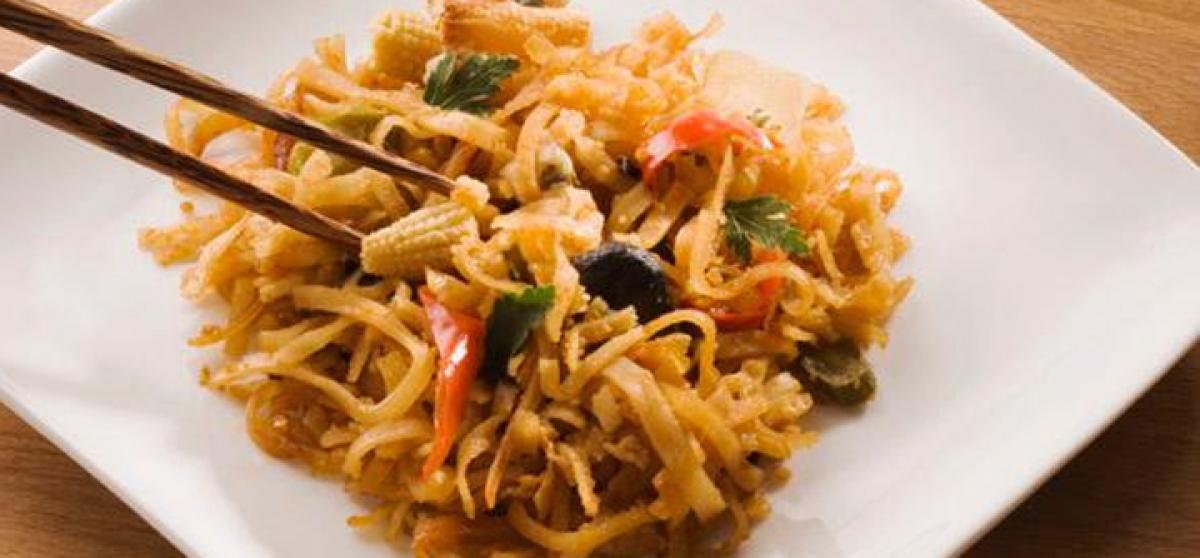Live
- Cong made mockery of Constitution by releasing its manifesto in silent period: BJP
- Gujarat Titans rope in Parthiv Patel as assistant and batting coach ahead of IPL 2025
- AP Assembly Session: Minister Nara Lokesh Addresses DSC notification
- Shaheen Afridi reclaims top spot in ODI bowlers rankings
- J&K: NIA attaches house of accused over murder of 2 non-locals in Srinagar
- Trump picks army veteran and TV celeb Hegseth as Defence Secretary
- Swiggy-backed Rapido sees net loss at Rs 371 crore in FY24
- Sensex slips below 78,000, investors lose over Rs 6 lakh crore
- I expect people will give me chance to represent Wayanad: Priyanka Gandhi
- Cong poised for victory on Wayanad seat, INDIA Bloc in Jharkhand Assembly polls: Sandeep Dikshit
Just In

x
Highlights
The land of chopsticks holds a surprise for anyone who believes in the notion that Chinese food is greasy, rather bland for some, and rather too spicy for others. For eternal love for Chinese food I possessed, I noticed the authentic variety has some theatre to it - right from the way it is served to how it is eaten.
The land of chopsticks holds a surprise for anyone who believes in the notion that Chinese food is greasy, rather bland for some, and rather too spicy for others. For eternal love for Chinese food I possessed, I noticed the authentic variety has some theatre to it - right from the way it is served to how it is eaten.

Authentic Chinese food has a language to it - like theatre. It sizzles, crackles and pops in the mouth, slides as the chopsticks land close to your mouth. Even the street food is so dramatic - the way each of the meats or vegetables react when treated to the fire on the kerbs.
Famished, yet excited about my first meal in Beijing, as I set my foot on a line of restaurants at around 9 p.m., surprisingly many restaurants were downing their shutters. On a normal day, the locals in Beijing, I was told, start their dinner by 5 p.m. and do some exercise before they go to bed by 9 p.m. No wonder, they are all so petite!
Wandering around the restaurant, one can see how orderly and religiously a Chinese man was eating his noodle soup. After food and a few drinks is when one can spot the Chinese in their right form - loud and open.
So, late eaters like us were left with very few options - some restaurants, street food and pubs. As we took our seats in a restaurant which operated 24x7, there soon appeared some happy Chinese waitresses who started getting us salads and starters. No waiting at restaurants in Beijing. Impressive!
Interestingly, the waitresses also held high-tech devices, placing orders soon after we pointed at something on the menu, to avoid any language misunderstandings.
Each of the dishes was placed on our table in a dramatic way - some on sizzler platter - among them a plain soy-glazed Peking duck and some vegetable dishes.
There was also the traditional seaweed, lotus root and bell pepper salad, stir fried Chinese bok choy, steamed duck feet, tofu in a butter sauce, squid and shrimp dumplings et al. All one needed to do when at the table was be open to what was coming.
The true Chinese food seemed so healthy and so unlike the greasy takeouts the world knows of - packed in paper bags turning transparent due to the oil they carry.
As I gathered my chopsticks, a Chinese friend began to explain how kids would pick up raw eggs with their sticks, nailing them perfectly. As a fellow Indian friend laid his chopsticks in a bowl, the Chinese got nearly offended, and said to have the sticks standing in a bowl of rice is an offering to dead.
Who knew there was also a whole language behind these narrow wooden sticks!
The food, very unique in its taste and texture had minimal use of spices. There was majorly soy, garlic and chili, together sometimes, to make a pungent dish. The food used very little oil and the majority of the dishes were steamed or stir-fried.
This very aspect is probably why the Chinese food has so many adaptations in the world. The Indian version with a little too much chili sauce, the western one a little too bland.
The street food was the liveliest of all. The Wangfujing street, a popular snack street, can have people either completely excited or entirely appalled by it - for the number of insects one can find there - not crawling, but being roasted on spit-fires.
China certainly does change one's perception of Chinese food or the people.

Next Story
More Stories
ADVERTISEMENT
© 2024 Hyderabad Media House Limited/The Hans India. All rights reserved. Powered by hocalwire.com







